*Carol* is a beautiful, emotionally restrained lesbian love story set in 1950s America. It was directed by Todd Haynes and is based on Patricia Highsmith’s once-anonymous novel *The Price of Salt*. The movie shows the forbidden closeness between two women of different classes and ages at a time when their love was seen as not just wrong, but also immoral.

Therese, a quiet young woman working at a Manhattan department store, dreams of becoming a photographer. One winter day, she meets Carol, a beautiful, elegant woman buying a Christmas gift for her daughter. A forgotten glove becomes their first connection, and soon, a series of letters, phone calls, and a road trip solidify a bond that neither expected. But Carol is in the midst of a divorce, and her husband threatens to use her relationship with Therese to gain custody of their child. Their love is real, but the price may be everything.

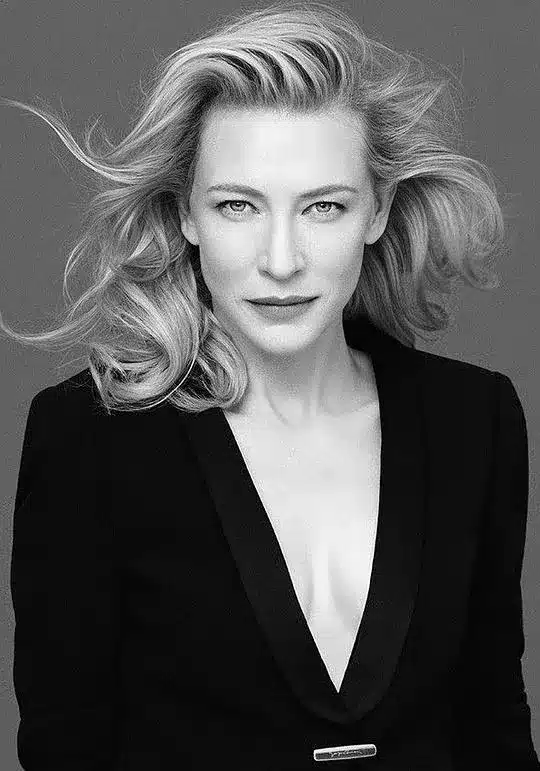
A poised, elegant woman navigating divorce, motherhood, and her undeniable desire for another woman in a world that forbids it. Carol is magnetic, mysterious, and heartbreakingly human.
Cate Blanchett
Cate Blanchett brings to life the fantasy of the perfect older woman — confident, sensual, and deeply complex. With her signature voice and commanding presence, Blanchett delivers a performance of controlled longing, especially powerful in her quieter moments. Her portrayal of Carol is both alluring and conflicted, making her one of the most iconic lesbian characters in cinema.

A quiet department store clerk with artistic ambitions, Therese is young, curious, and aching to understand herself. Her inner world is full of yearning, her gaze often lingering in awe.
Rooney Mara
Rooney Mara is breathtaking in her restraint. She embodies Therese with subtlety and fragility, yet with flashes of fierce determination. Every glance, every hesitation feels honest. Her transformation from shy girl to someone who dares to say no is quietly radical — and entirely believable.
Director

Todd Haynes
Todd Haynes is an acclaimed American filmmaker known for his poetic visual style and emotionally complex stories centered around identity, repression, and desire. As an openly gay director, Haynes has long explored queer themes with subtlety and intelligence, from Far from Heaven to Velvet Goldmine. With Carol, he brings his signature elegance and emotional restraint to a love story between women, crafting a film that is both visually exquisite and deeply moving — a masterclass in cinematic intimacy.
BEST SCENES
📍 The First Glance at Frankenberg’s
Carol in her fur coat. Therese in her uniform. A toy train between them. One glance, and the world shifts. Their chemistry is instant — and the shot composition makes sure we feel it, too.
📍 “What a strange girl you are. Flung out of space.”
At lunch, Carol teases Therese with this iconic line. It’s flirtation veiled in poetry. The delivery is soft, but the implication is thunderous: you’re unlike anyone I’ve ever met.
📍 Waterloo Motel (Love Scene)
Shot with restraint and elegance, this scene is as tender as it is raw. There’s no music — just the rustle of sheets, gasps, and the crackle of emotion. “My angel, flung out of space.” One of the most sensual and emotionally charged love scenes in queer cinema.
📍 The Separation – and the Letter
Carol’s sudden withdrawal and her cold, painfully composed letter leaves Therese shattered. Her whispered “I miss you, I miss you” into a dead phone line in the darkroom is pure heartbreak.
Carol Review
Review

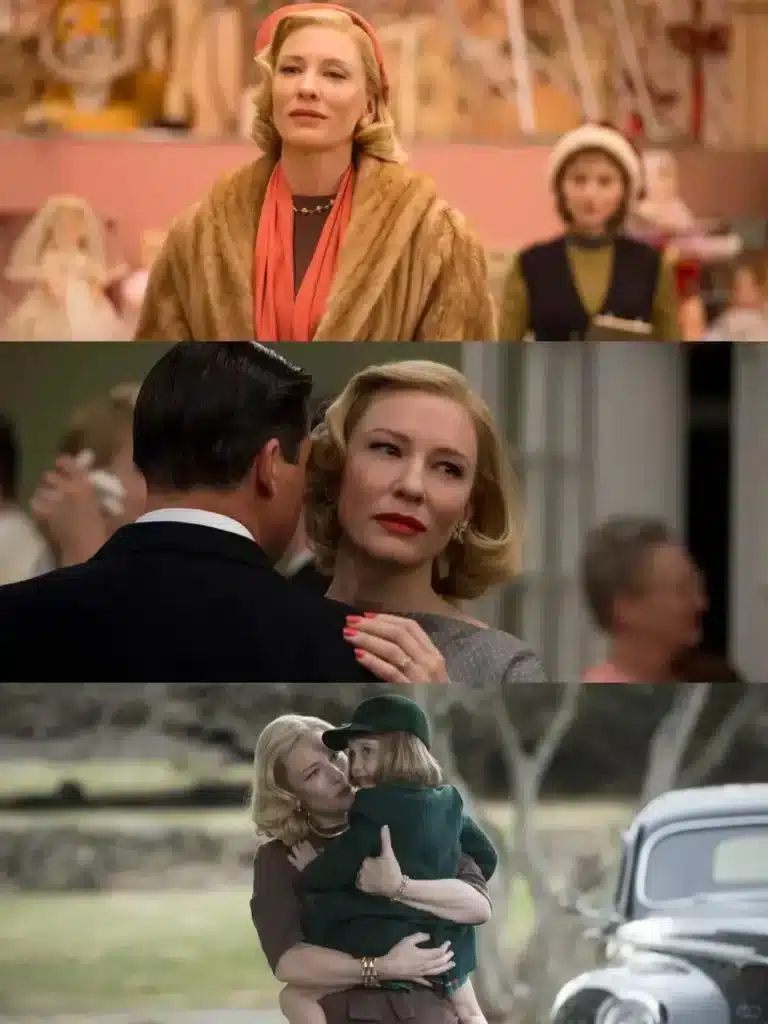
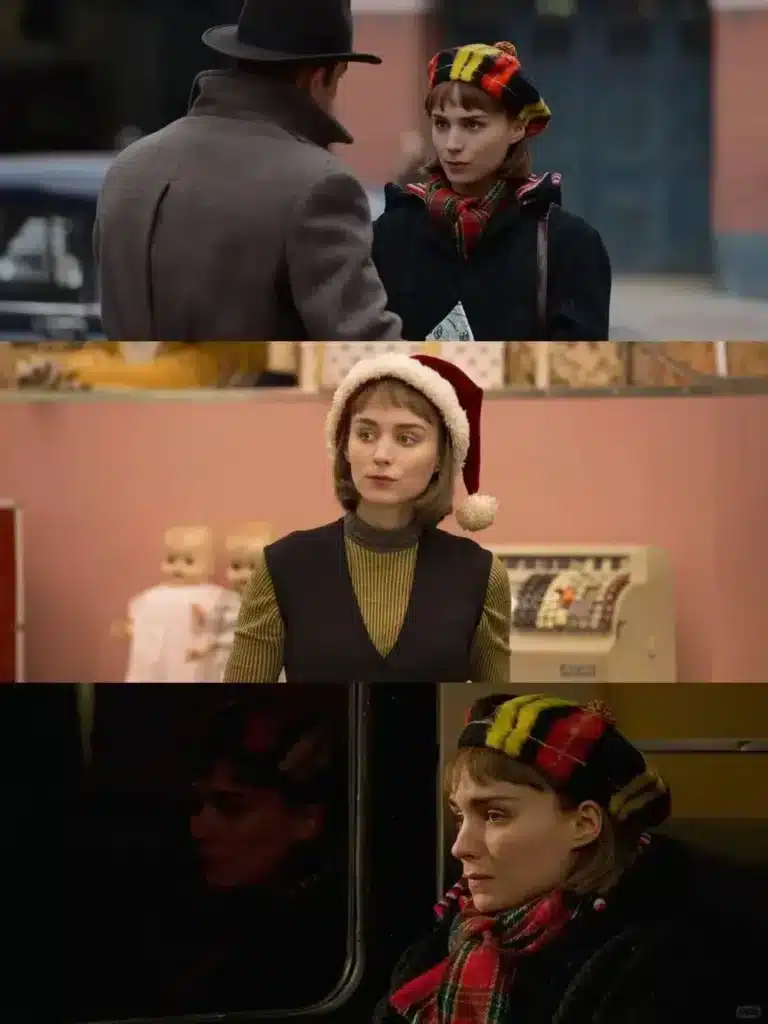
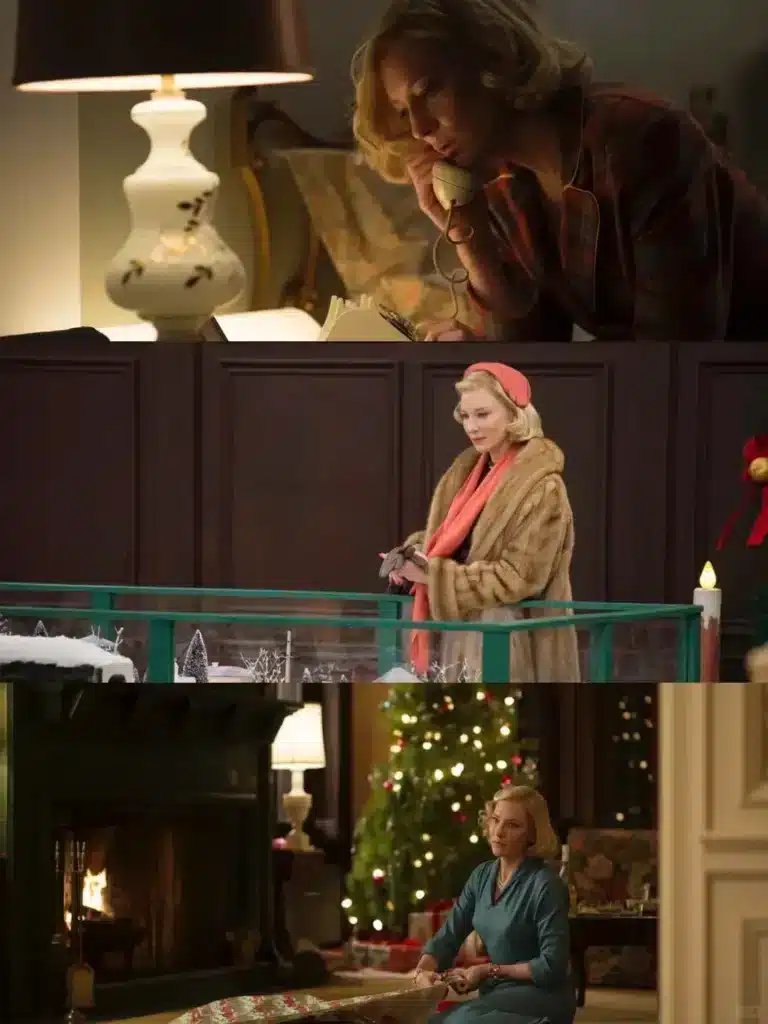

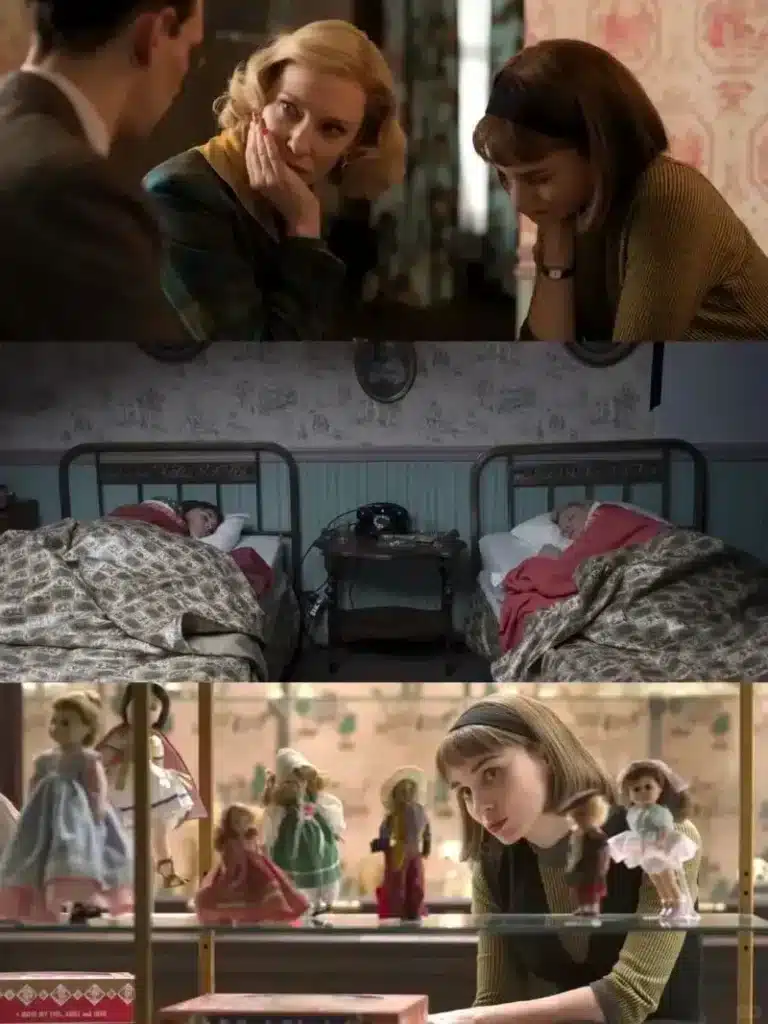
Carol isn’t just a love story — it’s a study in atmosphere, gaze, restraint, and the silent cost of desire. Every frame is carefully composed, every glance charged. Haynes makes a deliberate choice to exclude anything unnecessary: no subplots, no moralizing, just two women orbiting each other through New York’s gray skies and smoky interiors.
Therese is inexperienced, yes — but never passive. Her longing is intense, quiet, and dangerously pure. Carol, by contrast, is magnetic and poised, yet emotionally veiled. Cate Blanchett plays her with a studied elegance, while Rooney Mara’s subtle, ever-shifting expressions give Therese an aching emotional depth. Their chemistry builds not through declarations, but silence: shared car rides, the handling of a camera, the brushing of hands.
In contrast to the novel, the film makes several narrative changes — most notably, Carol’s perspective becomes less bold, more maternal. Scenes like the famous “Waterloo confession” are removed or softened. Carol’s decision to give up custody is no longer purely about love, but also for her child’s welfare. These changes, while making the story more cinematic, also dilute some of the defiance that made the book so groundbreaking.
But what the film loses in rawness, it gains in visual poetry. The muted palette, the vintage set design, the grainy film stock — everything reflects a world of hidden longing and impossible choices. The eroticism is never vulgar. Their love scene, short but exquisitely shot, isn’t about sex — it’s about claiming something fleeting and sacred in a hostile world.
The final scene — a single, teary-eyed gaze across a crowded room — is one of the most powerful endings in queer cinema. It says everything without a word.
💬 My Take
Carol hit me like a train cloaked in velvet. There’s a quiet fury beneath its elegance — a scream whispered through glass. What moved me most was not the passion, but the restraint: how two women fight for something they can’t even name aloud. Their love isn’t framed as deviant — it’s simply love. In fact, the film is so committed to showing this that it never once says the word “lesbian.”
It’s a film that rewards silence. That trusts us to read between the lines. That reminds us that sometimes, the most powerful “I love you” is spoken with a look — not a word.
NOVEL VS FILM: What Changed?
The Source:
Carol is adapted from Patricia Highsmith’s 1952 novel The Price of Salt, a landmark in lesbian fiction for offering a rare hopeful ending. The film makes several changes — some subtle, some significant — to bring the story into a cinematic rhythm.
Key Differences:
Therese’s Profession
In the novel, she’s a stage designer. In the film, she becomes a photographer — a smart choice, visually and emotionally. Her lens becomes a metaphor for her gaze and desire.
The Initial Connection
The novel has Therese send Carol a Christmas card after meeting her. In the film, Carol forgets her gloves, and Therese mails them back — a more natural, graceful bridge.
Gift Exchange
Rather than expensive bags and suitcases from the book, the film opts for records, a camera, and film — small items charged with intimacy and creative symbolism.
Waterloo Motel Scene
The novel’s Waterloo scene includes an explicit and heartfelt confession: “Don’t you know I love you?” The film omits most of this, focusing instead on the physical closeness and the iconic “My angel, flung out of space.” The emotional build-up is more visual than verbal.
Carol’s Motivation
In the book, Carol is more defiant — willing to risk everything for love. The film, however, leans more into her role as a mother making painful sacrifices. Her choices feel more grounded in realism, but slightly soften the revolutionary spirit of the original.
Carol’s Letter
The letter in the film is cool and distant: a goodbye masked as kindness. In the novel, Carol remains more emotionally transparent and hopeful, making the distance between them more painful — but also more romantic.
The Ending
The film ends with a lingering gaze — open-ended, charged with possibility. The book gives us a clearer, though still ambiguous, reunion: a meeting, a long embrace, a hint at life together. The film opts for mood and suggestion, rather than resolution.
Carol Information
Film Festival Recognition
🎥 Carol was not only a critical success but also a major awards contender across the 2015–2016 season. The film was praised for its direction, cinematography, and the powerful performances by Cate Blanchett and Rooney Mara. Here’s a highlight of its accolades:
Cannes Film Festival 2015
🏅 Best Actress – Rooney Mara (Joint Winner)
🎬 Nominated – Palme d’Or (Main Competition)Academy Awards (Oscars) 2016
🏆 6 Nominations:
• Best Actress – Cate Blanchett
• Best Supporting Actress – Rooney Mara
• Best Cinematography – Edward Lachman
• Best Adapted Screenplay – Phyllis Nagy
• Best Costume Design
• Best Original ScoreBAFTA Awards
🏆 9 Nominations including Best Film, Best Direction, and both acting categoriesGolden Globe Awards
🏆 5 Nominations
• Best Motion Picture – Drama
• Best Actress – Cate Blanchett
• Best Supporting Actress – Rooney Mara
• Best Director – Todd Haynes
• Best Original ScoreIndependent Spirit Awards
🏆 Winner – Best Cinematography
🎬 Nominated – Best Feature, Best Director, Best Female LeadNew York Film Critics Circle
🏆 Best Film
🏆 Best Director
🏆 Best CinematographyBFI (British Film Institute)
🎖️ Ranked Carol the #1 Best LGBTQ+ Film of All Time in 2016
